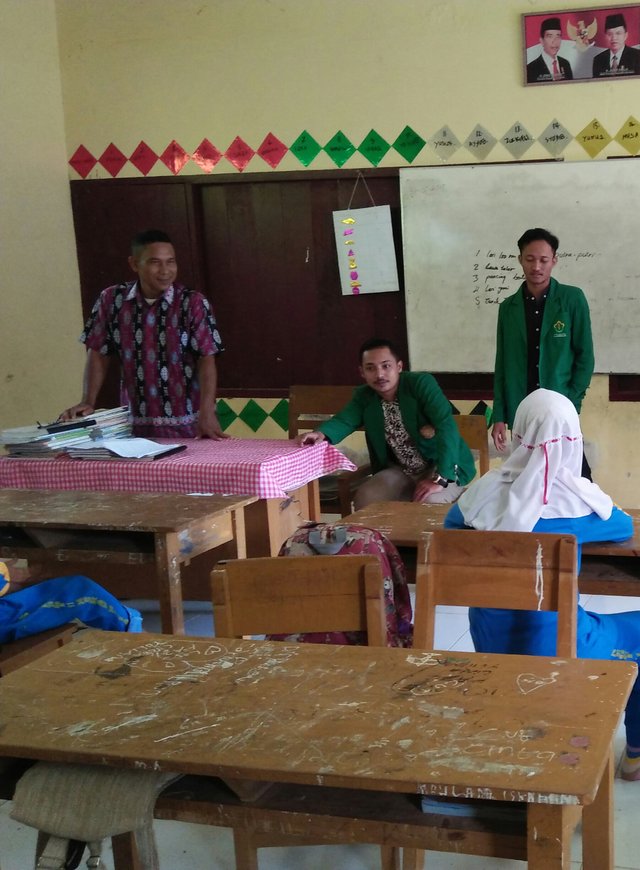The purpose of the Tutorial is to understand

The purpose of the Tutorial is to understand:
Types of child rights
Convention on the rights of children and education
Implications of the implementation of children's rights to learning in elementary school
Examples of children's rights in elementary school
Types of child rights
Based on its structure, CRC is divided:
Preambule (Mukaddimah)
Part One (Articles 1-41 on the Rights of All Children)
Part Two (Articles 42-45 on the Monitoring and Implementation of CRC)
Part Three (Articles 46-54 on the Entry into Convention).
Based on the content, CRC is divided:
Under the umbrella human rights convention: Civil and political rights, economic, social and cultural rights.
Based on the party responsible: FULL, PROTECT, and HARGAI.
Based on its scope: Right to grow life, Right to develop, Right to participate, and Right to participate in society.
Based on the formulation of the UN Committee on the Rights of the Child: Common Implementation Measures, Definitions of Children, General Principles, Civil and Independence Rights, Family Environment and Alternative Care, Basic Health and Welfare, Education, Leisure, and Cultural Activities, and Steps special special
Convention on the Rights of the Child and Education
Education shall be undertaken by every child without discrimination, respecting his social culture
There are three chapters on education, leisure and cultural activities: Article 28: basic education is the right of all children, and must be provided by the state also available only to all children. Education in various forms and higher education must also be sought to be obtained by children, with financial assistance from the state. Article 29: the purpose of education is to develop the child's optimal personality, talents and abilities, establish respect for human rights, prepare children for a responsible life in a free and pluralistic society, and respect for parents, cultural identity, language, values and the natural environment. Article 31: the child has the right to rest and relax, play and participate in activities as well as cultural life and art.
"PLAYERS FOR THE SAME CHILD IS THE JOB FOR ADULTS."
Implications of the Rights of the Child on Learning in Elementary School
Learn the language of children, families, peer groups, communities, schools, and government.
Curricular: activities related to curriculum (class).
Kokurikuler: activities within the school (which support curricular activities).
Extracurricular: activities organized outside of programmed hours according to circumstances and needs.
Kokurikuler goal: to explain a subject (usually in accordance with the topic).
Purpose of extracurricular: so that children can relate between the knowledge developed in curricular with the circumstances and needs of the environment.
Examples of Violations of the Rights of the Child in Elementary School
In a child conflict state.
In non-conflict countries, there are child laborers, street children, child sex, kidnappings and trafficking of children, street children, and so on.
Number in Indonesia:
2011, violence against children: 2,508 cases.
2012, violence against children: 2,637 cases. 2,637 cases of such violence, 1,266 cases were sexual violence.
2012 cases of infant disposal reaches 162 cases or almost every 2 days once there is a baby who is discarded.
Ranking of education Indonesia:
1997 from 49 countries, Indonesia is ranked 39th.
1999, from 47 Indonesian countries are ranked 46th.
2002 from 49 countries, Indonesia ranked 47.
2007 from 55 countries, Indonesia is ranked 53.
Expression
"The biological and soul condition, affection and tenderness is the right that every child coveted every day, always give your child a good night kiss, even if you are asleep." (Widodo Judarwanto)
"Children need love, especially when they do not deserve it." (Harold Hulbert)
Posted on EDUCATIONAL CHILDREN IN SD
Leave a comment
MARCH 14, 2014
THE CONVENTION OF THE RIGHTS OF CHILDREN (CRC)
The purpose of the Tutorial is to understand:
Child convention
Background of child convention
Understanding the Convention on the Rights of the Child
The Convention is an agreement between several countries (international law).
The Right is Human.
Rights of the child:
Everything attached to the child from birth (physical and psychological).
Anything that creates obligations to others.
The child's obligations are:
Respect for the rights of other children.
Respect for parents and teachers, they also lack. **
Learning lifelong for the future.
Child is any person under the age of 18, unless the national law establishes a different age.
Background of CRC
1923 Eglantine Jebb made by the Declaration of the Rights of the Child.
1924 The Declaration of the Rights of the Child was adopted by the League of Nations.
1948 The UN General Assembly handles the Declaration of Human Rights.
1945 The United Nations was formed.
1959 The United Nations explores the rights of the child for the second time.
1979 International Children's Year
1989 Rights Convention
Posted on Utopian.io - Rewarding Open Source Contributors
Your contribution cannot be approved because it does not refer to or relate to an open-source repository. See here for a definition of "open-source."
You have also picked an incorrect category, an incorrect repository ..
You can contact us on Discord.
[utopian-moderator]